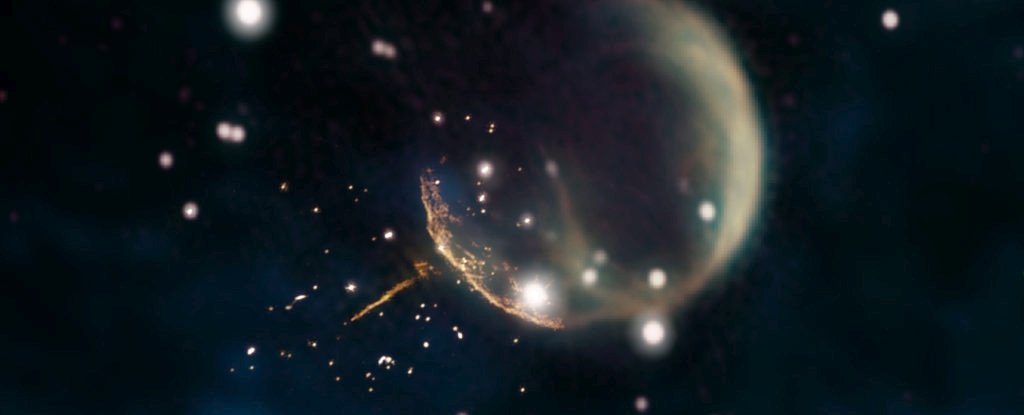Astronomers
have clocked a pulsar careening through space at a mind-boggling 2.5 million
mph (4 million km/h). It seems to have been kicked to such high speeds by its
parent supernova.

Researchers
announced the discovery March 19 at the High Energy Astrophysics Division
meeting of the American Astronomical Society in Monterey, California. They
spotted the pulsar from low Earth orbit with NASA's Fermi Gamma-ray Space
Telescope and using the Karl G. Jansky Very Large Array in New Mexico.
“Thanks to its narrow dart-like tail and a fortuitous viewing angle, we can trace this pulsar straight back to its birthplace,” Frank Schinzel of the National Radio Astronomy Observatory in New Mexico, said in a statement.
Speedy star
Pulsars
are one of the most dramatic phenomena in the universe. They are rapidly
spinning neutron stars, which are the cores of collapsed giant stars. As these
dense neutron stars spin, they emit beams of electromagnetic
radiation that can be detected only when pointed toward Earth. Thus, their
signals seem to pulse, giving them their name.
The
speedy pulsar was discovered in 2017 using Fermi data and a citizen-science
project called Einstein@home,
which uses regular computers' idle time to process astrophysical data. After
crunching 10 years' worth of numbers, Schinzel and his colleagues calculated
the new pulsar's incredible speed and its direction as it moves through space.
The
pulsar, dubbed PSR J0002+6216 (or J0002 for short), is 6,500 light-years away
from Earth and 53 light-years away from CTB 1, the remnant of a supernova. The
pulsar is trailed by a 13-light-year-long tail of magnetic energy and
particles, which points right back to CTB 1.
Ancient explosion
About
10,000 years ago, a supernova exploded, leaving behind CTB 1 and shooting J0002
outward. According to the new research, which has been submitted for
publication to The Astrophysical Journal Letters, the pulsar is faster than 99
percent of pulsars for which the speed is known, as it's cruising at five times
the speed of the average pulsar. It will eventually leave the
Milky Way.
The
researchers plan to study J0002 to better understand the supernova explosion
that sent it flying, drawing in more observations from the National Science
Foundation's Very Long Baseline Array and NASA's Chandra X-ray Observatory.
“Further study of this object will help us better understand how these explosions are able to 'kick' neutron stars to such high speed,” Schinzel said.
Comments
Post a Comment